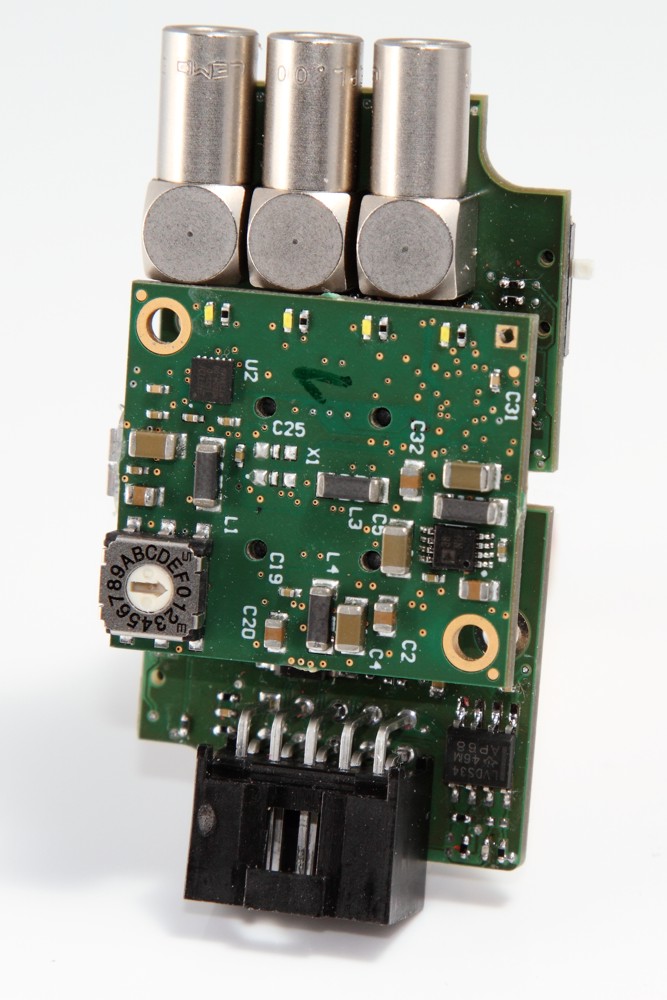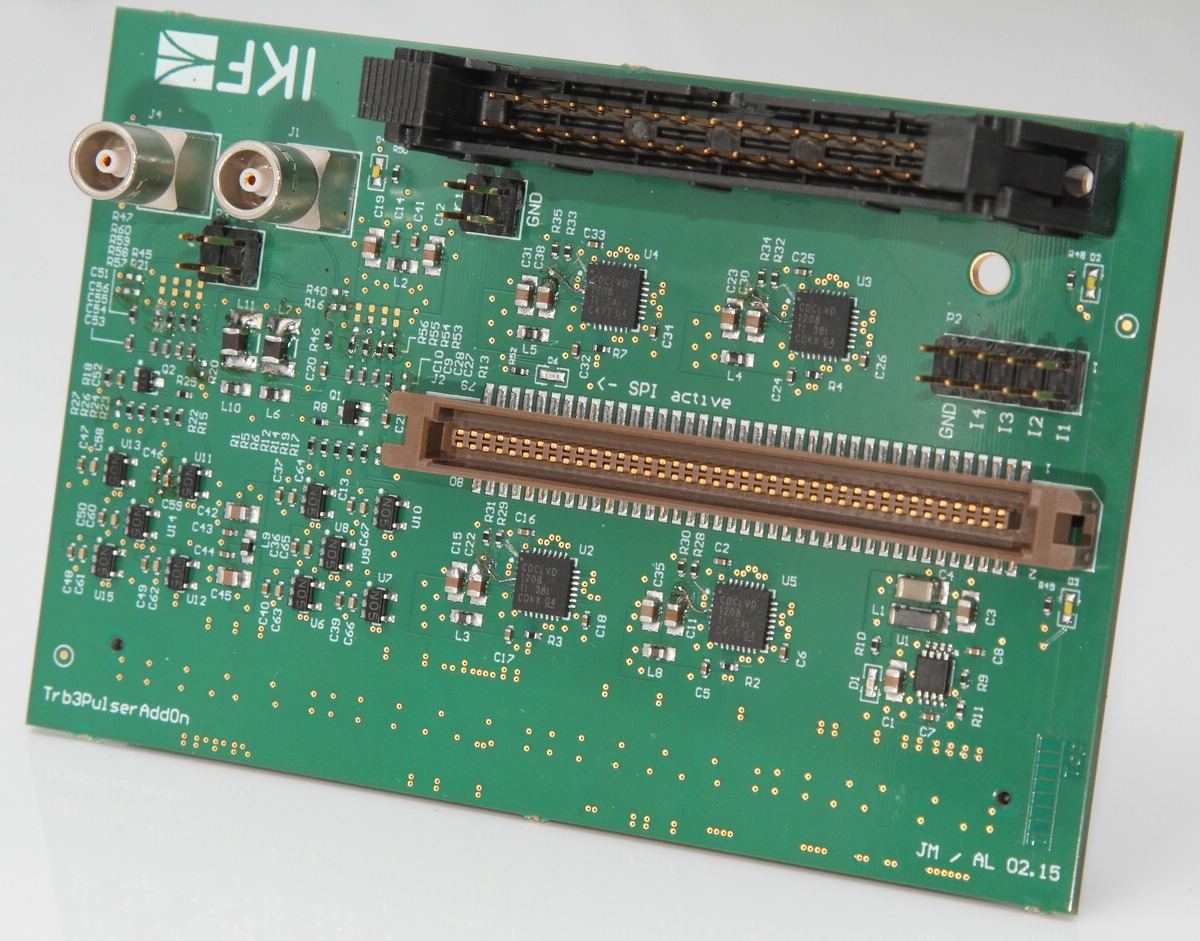 The DiRICH module is a 32 channel transformer, amplifier (factor 30), discriminator (with thresholds settings), 😍0ps RMS time precision TDC (currently, can be improved) and finally readout of the data via TRBNet. So, it is an improved version of the combination of a Padiwa + a small part of the TRB3.
The DiRICH module is a 32 channel transformer, amplifier (factor 30), discriminator (with thresholds settings), 😍0ps RMS time precision TDC (currently, can be improved) and finally readout of the data via TRBNet. So, it is an improved version of the combination of a Padiwa + a small part of the TRB3.


The LogicBox provides level conversion and basic logic functions in a small package. As input and output modules two versions each are available: LVDS/TTL on pin-header - four signals in total, either all LVDS or all TTL or mixed. Second option: NIM / TTL on LEMO, three signals in total.
The user can choose between different operating modes: In the basic version, only level conversion is available with limited support for fan-out configuration. There is also an FPGA-AddOn (using a tiny MachXO3 in a 3mm sized package) available - here functions like AND, OR, stretcher, pulser can be selected.
Documentation on the module is available at
this link.
 The CBM-TOF board - a 32 channel TDC with optical link, high-quality clock input, low-noise power supply for best TDC performance. The board is fully compatible to TRB3 (it contains a full TrbNet endpoint).
The CBM-TOF board - a 32 channel TDC with optical link, high-quality clock input, low-noise power supply for best TDC performance. The board is fully compatible to TRB3 (it contains a full TrbNet endpoint).

The new JTAG-programmer: Used instead of the normal white programmer, features four different outputs matching the connectors on most of our boards. The board can be changed to a USB-to-serial, USB-to-SPI or similar converter by reprogramming of the FTDI USB-chip.
Note that there are some software issues on some Linux systems which need to be investigated. On Windows and some Linux machines it works flawless and faster than the original programmer.

Our most recent addition to the set of AddOns: Combined with a Trb3sc it produces digital pulses (LVDS) with a minimum width of 1.04 ns and arbitrary period. 48 outputs using our usual 40-pair KEL and 17-pair pin-header connector are available. 16 lines are controlled individually, 32 more are connected in groups of 8. The time offset between channels can be configured online.
An additional analog part can generate PMT-like signals with varying amplitude and pulse shape.
 The DiRICH module is a 32 channel transformer, amplifier (factor 30), discriminator (with thresholds settings), 😍0ps RMS time precision TDC (currently, can be improved) and finally readout of the data via TRBNet. So, it is an improved version of the combination of a Padiwa + a small part of the TRB3.
The DiRICH module is a 32 channel transformer, amplifier (factor 30), discriminator (with thresholds settings), 😍0ps RMS time precision TDC (currently, can be improved) and finally readout of the data via TRBNet. So, it is an improved version of the combination of a Padiwa + a small part of the TRB3.





 The CBM-TOF board - a 32 channel TDC with optical link, high-quality clock input, low-noise power supply for best TDC performance. The board is fully compatible to TRB3 (it contains a full TrbNet endpoint).
The CBM-TOF board - a 32 channel TDC with optical link, high-quality clock input, low-noise power supply for best TDC performance. The board is fully compatible to TRB3 (it contains a full TrbNet endpoint).
